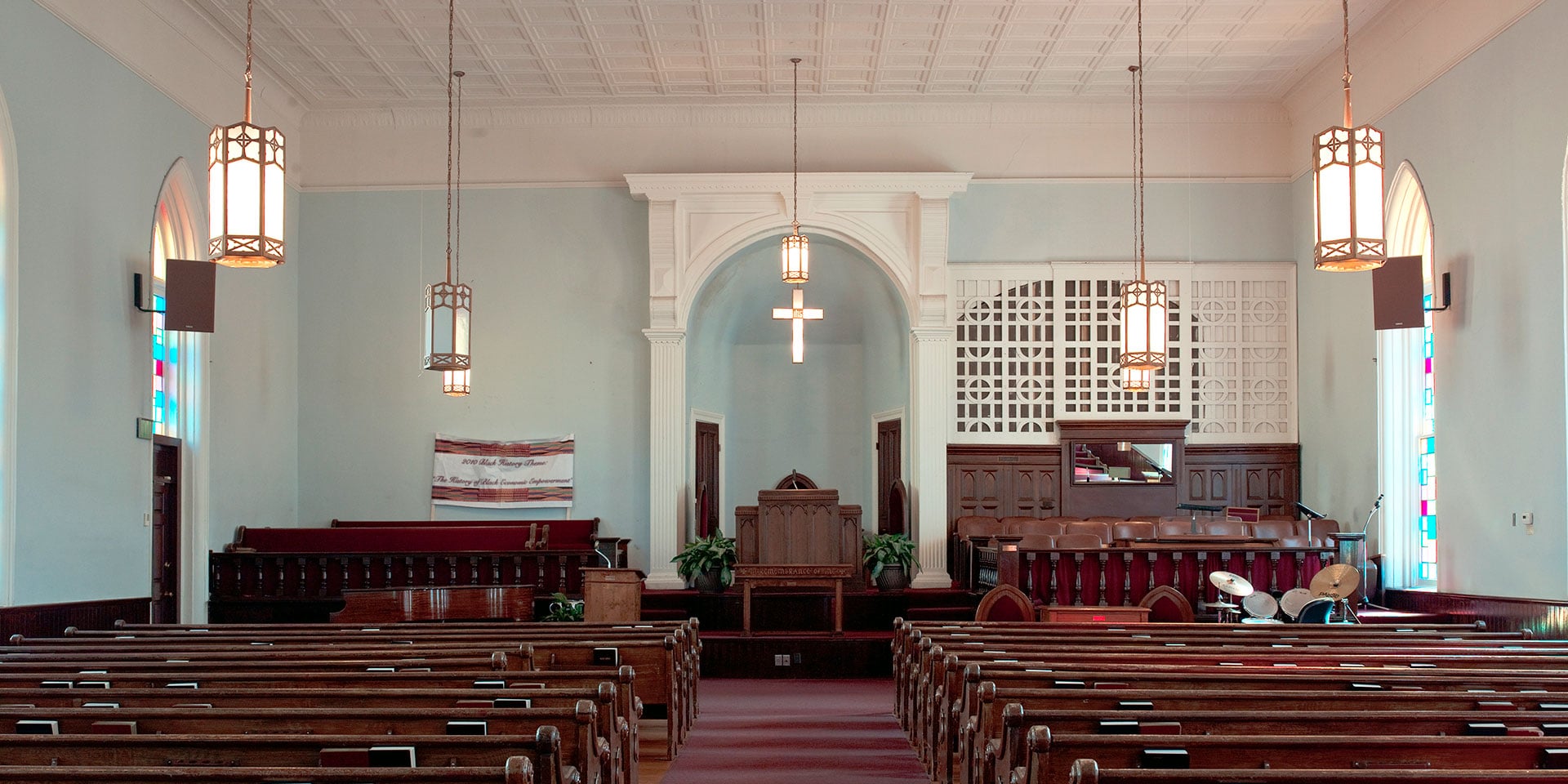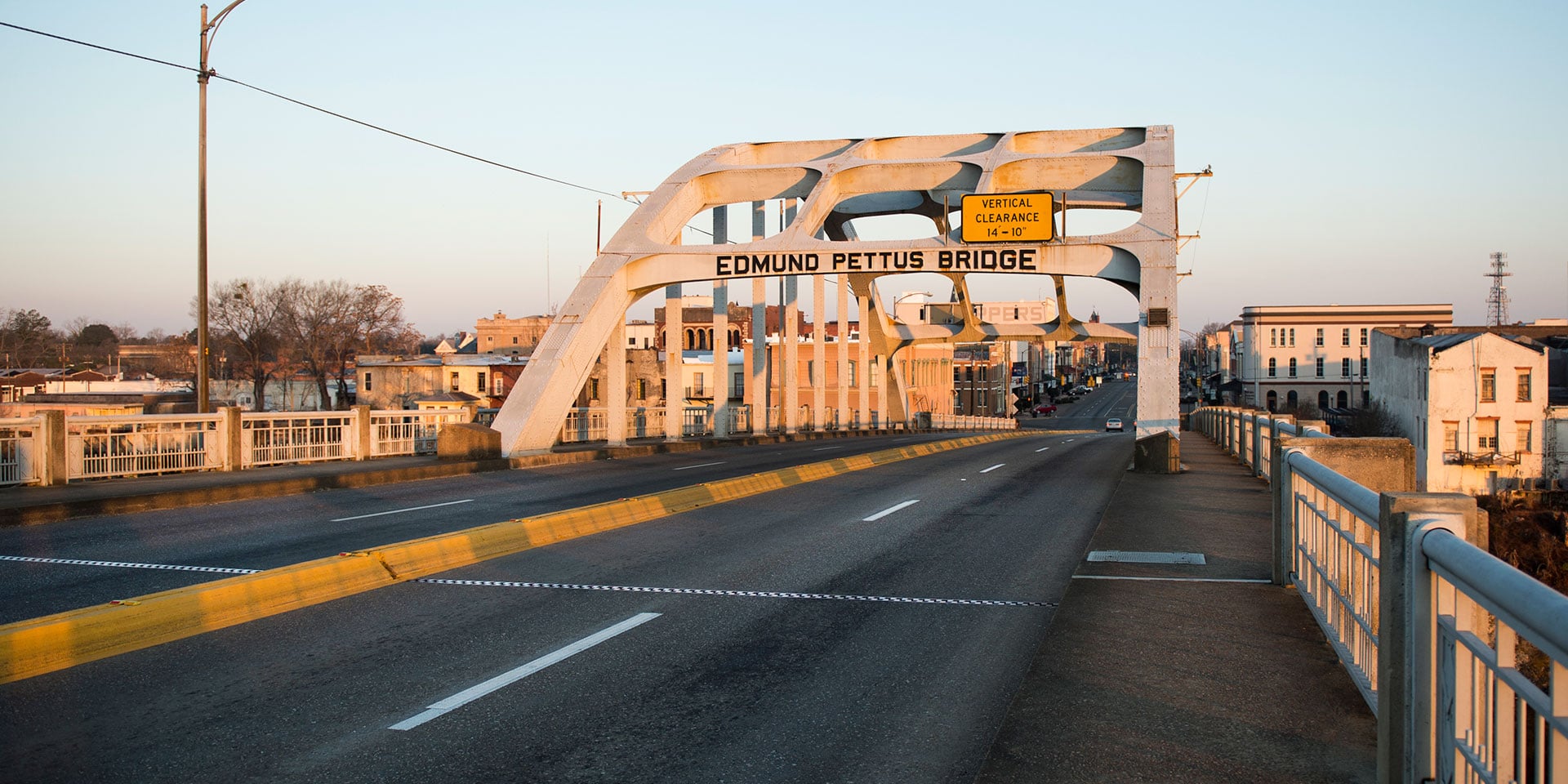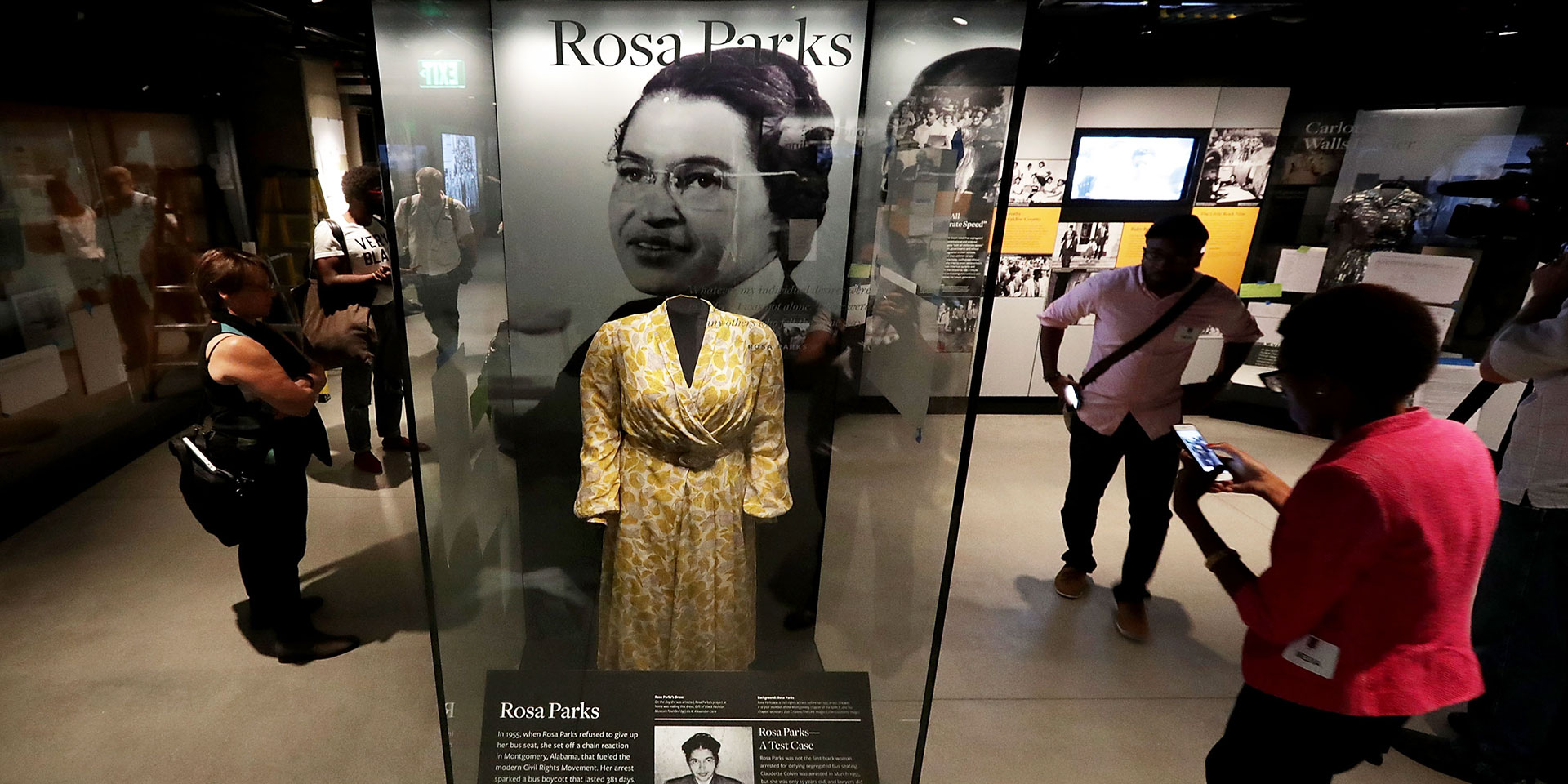From the Rosa Parks Museum, which sits in the very location where she refused to give up her bus seat to a white passenger, to the Dexter Avenue King Memorial Baptist Church in which Dr. King served as head pastor, Montgomery, Alabama, has several key sites that were climactic in the civil rights movement.
See the memorials, museums and civil rights landmarks that are plentiful throughout Montgomery. As always, check for travel restrictions and closures before planning your trip.
EJI Legacy Museum and National Memorial for Peace and Justice
The Equal Justice Initiative is a Montgomery-based nonprofit organization that challenges racial injustice and mass incarceration of black people. The organization sponsored the National Memorial for Peace and Justice that opened in the spring of 2018 and traces the legacy of lynching in post-Reconstruction and Jim Crow America to the country’s current state of mass incarceration.
At the EJI Museum, you take in multimedia exhibits like a little-seen interview given by Dr. King that explains the economic trappings of black people during that time period. There are also emotional exhibits, like a case filled with jars that display different soils where lynchings took place.
The six-acre memorial honors the 4,000 black people (that were recorded) who were murdered by white people in the South. The memorial ground gradually slopes, and you begin to look up at the suspended steel columns that are inscribed with the names of victims by county.
Dexter Parsonage Museum

Twelve pastors served as leaders in the Dexter Avenue King Memorial Baptist Church between 1920 and 1922 and lived in what is now the Dexter Parsonage Museum. When Dr. King was head pastor, his family lived at Dexter Parsonage.
The nine-room clapboard Parsonage dates back to 1912. It has been restored to look as it did when Dr. King and his family resided there. During a tour of the museum, you will see furniture in the living room, dining room, bedroom and study that was actually used by the civil rights icon.
Dexter Avenue King Memorial Baptist Church
The Dexter Avenue King Memorial Baptist Church is a National Historic Landmark and appears as it did when Dr. Martin Luther King Jr. served as pastor from 1954 to 1960. The church dates back to 1883 and was the site of mass meetings to organize the Montgomery Bus Boycott.
Some call the church the birthplace of the civil rights movement, and today, the church offers guided tours of the historic space, and visitors are welcome to join Sunday worship services — enjoying sermons and gospel renditions while sitting among the pews.
Rosa Parks Museum
In 1955, Rosa Parks changed history by sitting in the front seat of a Montgomery, Alabama, public bus — a seat that was exclusively reserved for white people. The Rosa Parks Museum was designed and built at the site where she was arrested for her refusal to give up the seat.
Visitors can see historic markers outside the museum that designate that pivotal moment in history, as well as inside the museum, where there are several interactive tours for guests. In addition to a 1955-era station wagon used to transport Freedom Fighters, the collection contains the original arrest report of Rosa Parks, court documents, and a replica bus from the ’50s, similar to the one Parks rode.
Edmund Pettus Bridge

Only a 45-minute drive from Montgomery, the Edmund Pettus Bridge, which is now a National Historic Landmark, was the site of the brutal Bloody Sunday beatings of civil rights marchers.
In the town of Selma, you can walk across the bridge where the televised attacks sparked mass support for nondiscriminatory suffrage. The drive from Montgomery to the Edmund Pettus Bridge is a poignant experience, as travelers see the road along which civil rights heroes marched 54 miles from Selma to the state capital in Montgomery.




